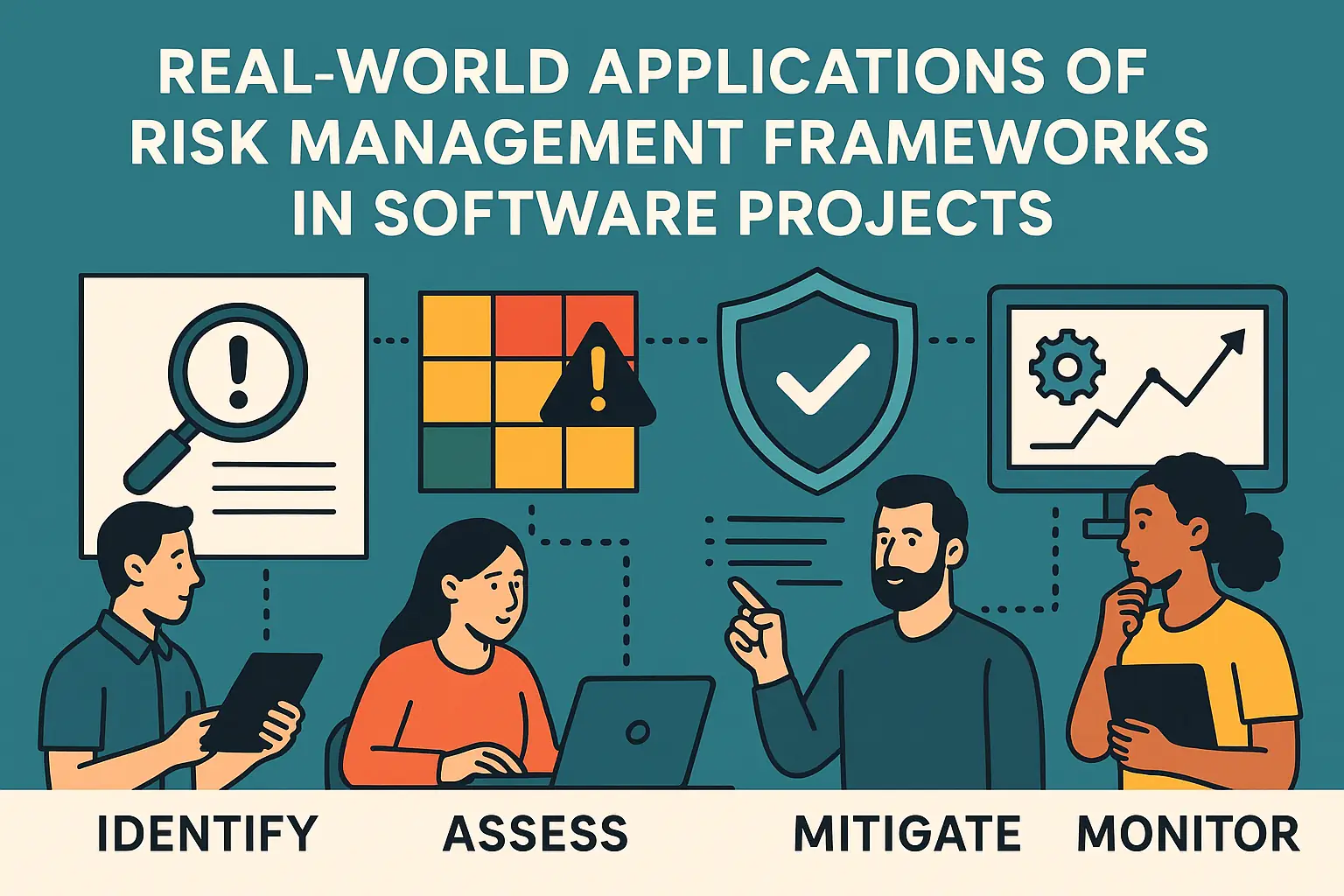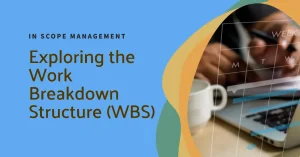Introduction to Risk Management in Software Project Management
Risk management is a critical aspect of software project management, serving as a systematic approach to identifying, assessing, and mitigating risks that could potentially impact project success. In the context of software development, where uncertainty and complexity are prevalent, effective risk management is essential for ensuring that projects are delivered on time, within budget, and to the required quality standards.
Definition of Risk Management and Its Importance
Risk management in software project management involves a structured process that encompasses the identification, analysis, and response to risks throughout the project lifecycle. This practice is vital for several reasons:
- Proactive Approach: By identifying risks early, project managers can develop strategies to mitigate them before they escalate into significant issues.
- Resource Optimization: Effective risk management helps in allocating resources more efficiently, ensuring that time and budget are not wasted on unforeseen problems.
- Stakeholder Confidence: A well-defined risk management plan enhances stakeholder trust, as it demonstrates a commitment to managing uncertainties and delivering successful outcomes.
Common Risks Faced in Software Projects
Software projects are susceptible to various risks, which can be broadly categorized into three main types:
- Technical Risks: These include challenges related to technology choices, integration issues, and the potential for software defects. For instance, adopting new technologies may lead to unforeseen complications that can delay project timelines.
- Resource Risks: This category encompasses risks associated with human resources, such as team member turnover, skill gaps, and availability. A lack of skilled personnel can hinder project progress and quality.
- Schedule Risks: Delays in project timelines can arise from various factors, including scope changes, underestimated tasks, and dependencies on external vendors. Schedule risks can significantly impact project delivery and client satisfaction.
Overview of Risk Management Frameworks
To effectively manage risks, project managers often rely on established risk management frameworks. Two prominent frameworks include:
- PMBOK (Project Management Body of Knowledge): This framework outlines a comprehensive approach to project management, including risk management processes. PMBOK emphasizes the importance of risk identification, qualitative and quantitative risk analysis, risk response planning, and monitoring.
- PRINCE2 (Projects in Controlled Environments): PRINCE2 provides a structured methodology for project management, with a strong focus on risk management. It encourages continuous risk assessment and emphasizes the need for a risk management strategy tailored to the project’s specific context.
Understanding Risk Management Frameworks
Effective risk management is crucial for ensuring project success. Various frameworks and methodologies guide the risk management process, helping project managers identify, assess, and mitigate risks. Below, we explore some popular risk management frameworks, compare qualitative and quantitative approaches, and provide guidance on selecting the appropriate framework based on project needs.
Popular Risk Management Frameworks and Methodologies
- PMBOK (Project Management Body of Knowledge): PMBOK outlines a structured approach to project management, including risk management as a key knowledge area. It emphasizes the importance of risk identification, analysis, and response planning, providing a comprehensive framework for managing risks throughout the project lifecycle.
- PRINCE2 (Projects in Controlled Environments): PRINCE2 is a process-driven project management methodology that includes risk management as a fundamental component. It focuses on identifying risks at the start of the project and continuously monitoring them, ensuring that risk management is integrated into every stage of the project.
- Agile Risk Management: Agile methodologies, such as Scrum, incorporate risk management through iterative cycles and regular feedback. Risks are identified and addressed in each sprint, allowing teams to adapt quickly to changes and uncertainties.
- ISO 31000: This international standard provides guidelines for risk management applicable to any organization or project. It emphasizes a structured and comprehensive approach to risk management, focusing on integrating risk management into the organization’s governance and decision-making processes.
Qualitative vs. Quantitative Risk Analysis Approaches
- Qualitative Risk Analysis: This approach involves assessing risks based on their likelihood and impact using subjective measures. It often employs tools like risk matrices and expert judgment to prioritize risks. Qualitative analysis is beneficial for quickly identifying high-priority risks and is particularly useful in the early stages of a project when detailed data may be lacking.
- Quantitative Risk Analysis: In contrast, quantitative analysis uses numerical data and statistical methods to evaluate risks. Techniques such as Monte Carlo simulations and decision tree analysis provide a more objective assessment of risks, allowing project managers to estimate potential impacts on project objectives. This approach is valuable for projects with significant uncertainties and where precise data is available.
Selecting the Appropriate Framework Based on Project Needs
Choosing the right risk management framework depends on several factors:
- Project Size and Complexity: Larger and more complex projects may benefit from structured frameworks like PMBOK or PRINCE2, which provide comprehensive guidelines. Smaller projects might find Agile methodologies more suitable due to their flexibility and adaptability.
- Organizational Culture: The existing culture within an organization can influence the choice of framework. Organizations that prioritize formal processes may lean towards ISO 31000 or PMBOK, while those that embrace agility may prefer Agile risk management.
- Stakeholder Involvement: The level of stakeholder engagement can also dictate the choice of framework. Frameworks that encourage collaboration and communication, such as Agile, may be more effective in environments with high stakeholder involvement.
- Risk Tolerance: Understanding the organization’s risk tolerance is crucial. Organizations with a low risk tolerance may require more rigorous frameworks, while those with a higher tolerance may opt for more flexible approaches.
Case Study: Agile Risk Management in Software Development
Agile methodologies have gained significant traction due to their iterative nature and flexibility. This case study explores how risk management is seamlessly integrated into Agile practices, showcasing its effectiveness through real-world applications.
Overview of Agile Principles and Their Relationship with Risk Management
Agile methodologies emphasize collaboration, adaptability, and customer feedback, which inherently align with effective risk management. The iterative cycles of Agile allow teams to respond to changes and uncertainties more swiftly than traditional project management approaches. This adaptability is crucial in managing risks, as it enables teams to identify and address potential issues early in the development process. Agile’s focus on continuous improvement and regular reassessment of project goals fosters an environment where risk management is not a one-time task but an ongoing process throughout the project lifecycle [1][2].
Specific Risks Encountered in Agile Software Projects
Agile projects face a unique set of risks, including:
- Changing Requirements: Frequent changes in project scope can lead to scope creep, impacting timelines and resources.
- Team Dynamics: The reliance on team collaboration can introduce risks related to interpersonal conflicts or miscommunication.
- Technical Debt: Rapid iterations may result in shortcuts that accumulate technical debt, affecting long-term project sustainability.
- Stakeholder Engagement: Inconsistent stakeholder involvement can lead to misaligned expectations and project goals [3][4].
Techniques Used for Continuous Risk Assessment and Management During Sprints
To effectively manage these risks, Agile teams employ several techniques:
- Daily Stand-ups: These brief meetings allow team members to discuss progress and identify any emerging risks, fostering transparency and quick resolution.
- Sprint Reviews and Retrospectives: At the end of each sprint, teams review what went well and what didn’t, allowing them to adjust their strategies and address risks proactively.
- Risk Backlogs: Maintaining a separate backlog for risks helps prioritize and track them alongside project tasks, ensuring they receive appropriate attention.
- Collaborative Tools: Utilizing tools that promote collaboration and visibility, such as Kanban boards or project management software, helps teams monitor risks in real-time [5][6].
Results of Effective Risk Management in an Agile Context
The integration of risk management within Agile frameworks has shown to yield significant benefits:
- Increased Project Success Rates: Agile teams that actively manage risks report higher success rates in meeting project goals and deadlines.
- Enhanced Team Morale: By addressing risks collaboratively, teams experience improved communication and morale, leading to a more productive work environment.
- Higher Customer Satisfaction: Continuous feedback loops and adaptability to change result in products that better meet customer needs, enhancing overall satisfaction [7][8].
Common Challenges in Risk Management for Software Projects
Implementing effective risk management in software project management is crucial for ensuring project success. However, project managers often encounter several challenges that can hinder the adoption and effectiveness of risk management practices. Below are some of the common obstacles faced, along with strategies to overcome them.
1. Cultural Resistance to Risk Management Practices
One of the primary challenges in risk management is cultural resistance within organizations. Team members may view risk management as an unnecessary bureaucratic process that slows down project progress. This resistance can stem from:
- Fear of Accountability: Team members may worry that identifying risks will lead to blame if those risks materialize.
- Lack of Understanding: Without a clear understanding of the benefits of risk management, team members may be reluctant to engage in the process.
Overcoming Cultural Resistance:
- Education and Awareness: Conduct workshops and training sessions to educate team members about the importance of risk management and how it can lead to project success.
- Leadership Support: Encourage leaders to champion risk management practices, demonstrating their value and importance to the organization.
2. Challenges in Risk Communication and Stakeholder Engagement
Effective communication about risks is essential for successful risk management. However, project managers often face difficulties in engaging stakeholders and ensuring that everyone is on the same page regarding potential risks. Common issues include:
- Information Overload: Stakeholders may become overwhelmed by excessive information, leading to disengagement.
- Misalignment of Priorities: Different stakeholders may have varying perspectives on what constitutes a significant risk, complicating consensus-building.
Enhancing Communication and Engagement:
- Tailored Communication: Customize risk communication strategies for different stakeholders, focusing on relevant information that aligns with their interests and concerns.
- Regular Updates: Implement regular risk review meetings to keep stakeholders informed and engaged in the risk management process.
3. Overcoming Challenges Through Training and Tools
To effectively manage risks, project managers can leverage training and tools designed to facilitate risk management processes. These resources can help address the challenges mentioned above:
- Training Programs: Invest in training programs that equip team members with the skills needed to identify, assess, and manage risks effectively. This can foster a culture of proactive risk management.
- Risk Management Tools: Utilize software tools that streamline risk identification, assessment, and monitoring. These tools can provide a centralized platform for documenting risks and tracking their status, making it easier for teams to collaborate and communicate.
By addressing these common challenges in risk management, project managers can enhance their ability to implement effective risk management frameworks in software projects. This proactive approach not only mitigates potential risks but also contributes to the overall success of the project.
Best Practices for Effective Risk Management in Software Projects
Effective risk management is not just a theoretical concept but a practical necessity. By implementing robust risk management frameworks, project managers can significantly enhance the likelihood of project success. Here are some actionable recommendations based on best practices for risk management in software projects:
Key Strategies for Successful Risk Identification and Assessment
- Comprehensive Risk Identification: Begin with a thorough identification of potential risks. This involves brainstorming sessions with team members, stakeholders, and subject matter experts to uncover all possible risks that could impact the project. Techniques such as SWOT analysis (Strengths, Weaknesses, Opportunities, Threats) can be particularly useful in this phase [2][5].
- Risk Assessment: Once risks are identified, assess their potential impact and likelihood. This can be done using qualitative and quantitative methods. Qualitative assessments involve categorizing risks based on their severity and probability, while quantitative assessments may involve statistical analysis to predict the potential impact on project timelines and budgets [3][4].
- Prioritization of Risks: Not all risks are created equal. Prioritize risks based on their potential impact on the project. This allows project managers to focus their resources on the most critical risks that could derail project objectives [4][5].
Importance of Ongoing Risk Monitoring and Review
- Regular Risk Reviews: Conduct regular risk reviews throughout the project lifecycle. This ensures that new risks are identified and existing risks are reassessed as the project evolves. Regular updates to the risk assessment can help in adapting to changes in project scope or external factors [7][8].
- Feedback Loops: Establish feedback mechanisms to learn from past projects. Analyzing previous projects for risk management successes and failures can provide valuable insights that inform current practices. This continuous learning approach helps in refining risk management strategies over time [1][6].
- Engagement of Stakeholders: Involve stakeholders in the risk monitoring process. Their insights can provide a broader perspective on potential risks and help in developing more effective mitigation strategies. Regular communication with stakeholders ensures that everyone is aware of the risks and the measures being taken to address them [2][4].
Utilizing Software Tools to Enhance Risk Management Efforts
- Project Management Software: Leverage project management tools that offer risk management functionalities. These tools can help in tracking risks, documenting risk assessments, and facilitating communication among team members. Features such as dashboards and reporting can provide real-time insights into the risk landscape of the project [8][9].
- Risk Management Methodologies: Implement methodologies such as Agile or Lean, which emphasize flexibility and responsiveness to change. These methodologies can enhance risk management by allowing teams to adapt quickly to new information and changing project dynamics [9][10].
- Data Analytics: Utilize data analytics to predict and analyze risks. Advanced analytics can help in identifying patterns and trends that may indicate potential risks, allowing project managers to take proactive measures before issues arise [8][9].
By adopting these best practices, project managers and students can significantly improve their risk management capabilities in software projects. Effective risk management not only safeguards project objectives but also enhances the overall success rate of software development initiatives.
Conclusion: The Importance of Risk Management in Software Project Success
The implementation of effective risk management frameworks is not just beneficial; it is essential for ensuring project success. The case studies presented throughout this discussion highlight several key takeaways that reinforce the value of proactive risk management strategies.
- Significance of Risk Management Frameworks: Effective risk management frameworks provide a structured approach to identifying, analyzing, and mitigating potential risks. These frameworks enable project teams to anticipate challenges and develop strategies to address them before they escalate into significant issues. The five-step risk management process—planning, risk identification and categorization, risk analysis, risk response planning, and monitoring—serves as a foundational model that can be adapted to various project contexts [1][12].
- Impact of Real-World Case Studies: The case study showcased demonstrate the tangible benefits of applying risk management principles in software projects. For instance, projects that proactively identified risks and developed comprehensive mitigation plans were able to navigate challenges more effectively, leading to improved project outcomes and stakeholder satisfaction. The example illustrate that when teams prioritize risk management, they not only enhance their ability to deliver projects on time and within budget but also foster a culture of continuous improvement and learning [3][8].
- Encouragement for Application: As project managers and students reflect on the insights gained from these case studies, it is crucial to encourage the application of learned concepts in their own projects. By integrating risk management practices into their workflows, they can better prepare for uncertainties and enhance their decision-making capabilities. Embracing a proactive approach to risk management will empower them to lead successful projects and contribute to the overall effectiveness of their organizations [4][12].
In conclusion, the importance of risk management in software project success cannot be overstated. By leveraging effective frameworks and learning from real-world applications, project managers and students alike can significantly improve their project outcomes and drive their teams toward success.
Find out more about Shaun Stoltz https://www.shaunstoltz.com/about/.
This post was written by an AI and reviewed/edited by a human.



